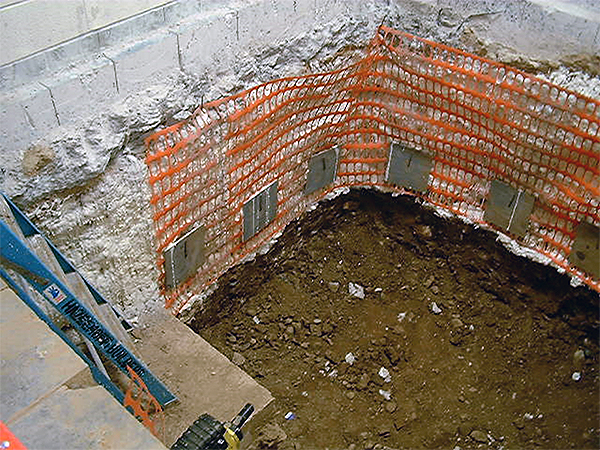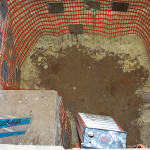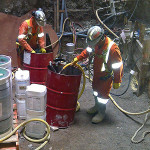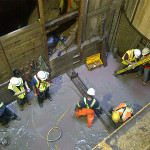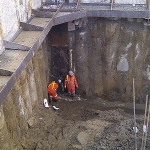Case description
A multinational equipment manufacturing company required a deep foundation to be excavated through granular soils with a high water table for installation of a new test cell within an existing plant facility, without disrupting adjacent equipment operations or causing settlement of building structures. Due to space constraints and ongoing equipment operations, conventional deep foundation shoring systems could not be utilized within the existing manufacturing plant.
Solution
A sleeve pipe grouting plan was designed and implemented by our grouting engineers to consolidate perimeter walls around the proposed deep excavation using water-activated polyurethane resin.
Where possible, sleeve pipes were installed at a spacing of 18 inches apart to a depth of 10 feet around the perimeter of the proposed excavation. At locations where various obstructions precluded sleeve pipe installation, conventional open drill holes were systematically drilled and injected using down stage techniques to complete soil stabilization around the perimeter of the excavation.
Water-activated, low-viscosity polyurethane resin with low accelerator dosage was systematically injected by our grouting specialists at a flow rate of 1/2 gallon per minute through each sleeve pipe port and drill hole to effectively permeate and stabilize the surrounding soil.
Upon completion of soil stabilization grouting work, the general contractor was able to proceed with test cell excavation and foundation construction as planned without encountering any delays or problems.

